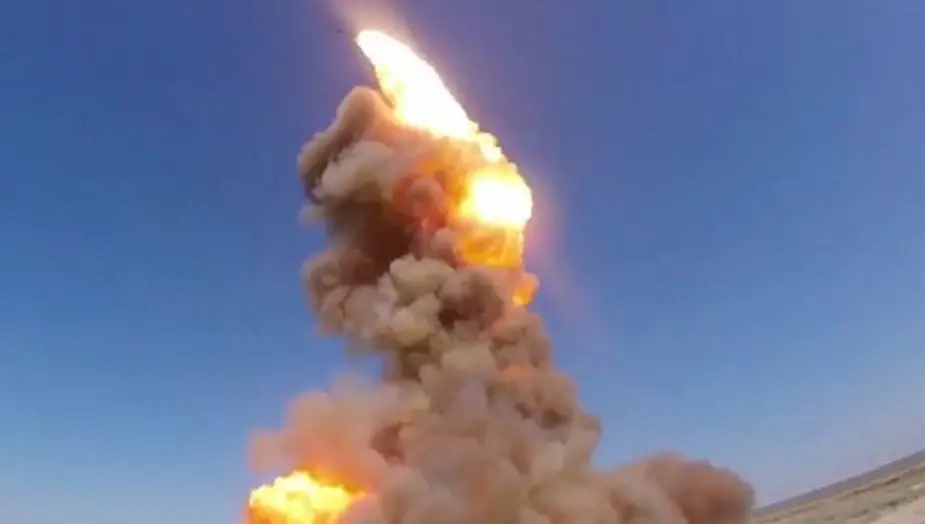Air and missile defense units of the Russian Aerospace Forces have recently launched a new antimissile at Sary-Shagan range in Kazakhstan. The official statement said the missile fully confirmed its capabilities and hit the target with assigned precision. The Defense Ministry aired the footage of the launch of the new close-range antimissile 53T6, the Izvestia daily writes.
 53T6M is a close-range interceptor like the predecessor. It destroys high-speed ballistic targets, such as ICBM reentry vehicles at a distance of 5 to 80 kilometers and altitudes of 5 to 30 km (Picture source: Sputnik)
53T6M is a close-range interceptor like the predecessor. It destroys high-speed ballistic targets, such as ICBM reentry vehicles at a distance of 5 to 80 kilometers and altitudes of 5 to 30 km (Picture source: Sputnik)
It is the upgraded 53T6M antimissile which was for the first time launched on November 24, 2017. It is distinguished by several features from the basic A-135 option which became operational in missile defense in 1995.
Firstly, it has a unique solid-fuel engine. It consumes a fuel mixture with a high performance index. Avangard enterprise near Moscow has been resuming the production of engines for 53T6M missiles since 2010. The second specific feature is a hull which is fully produced in Russia.
Thirdly, the loader rammer has been upgraded. A new transloader is a semitrailer pulled by KamAZ. It transports and loads into the silo launch containers kept thermostatic at any temperature. They are designed and produced by Iskra Bureau.
And finally, open sources said the missile interacts with upgraded A-235 missile defense which is replacing A-135 in Moscow and Central industrial district which it has defended for over 20 years.
53T6M is a close-range interceptor like the predecessor. It destroys high-speed ballistic targets, such as ICBM reentry vehicles at a distance of 5 to 80 kilometers and altitudes of 5 to 30 km. The new A-235 missile defense will engage 52T6M to destroy targets which break through the future long and medium-range defense of the country: stationary complexes with long and medium-range antimissiles, space stations with antimissile capabilities, warships armed with S-500 weapons, and ground mobile long-range launchers.
53T6 missiles always carried a nuclear small-yield warhead which guaranteed target destruction even in case of a near miss. The upgraded option is also likely to carry a nuclear charge. The precision guidance has to improve due to upgraded controls.
For clear reasons, there is no specific information about the antimissile in public domain. However, several suggestions can be made as A-235 is using the upgraded Don-2N radar of the previous A-135 system and protects the Central Industrial district.
The detection range is likely unchanged. It can be expanded due to the single information space of the missile defense integrated with early warning systems which were considerably improved after Voronezh radars were deployed.
The capabilities of the command center of the new missile defense had to radically change. The number of simultaneously tracked and destroyed targets depends on the hard and software. The center guides missiles and the whole missile defense, as well as related weapons. Actually, modern antimissile combat is waged by computers.
The integration and information capabilities in the XXI century can be considerably expanded. The system has to transmit and receive information from numerous related sources of other arms of troops and all inter-arm information systems.
The replacement is necessary to maintain the potential of the missile defense. Solid fuel is ageing even in ideal storage conditions and the life cycle of 53T6 missiles was nearing completion, the Izvestia said.
© Copyright 2019 TASS. All rights reserved. This material may not be published, broadcast, rewritten or redistributed.
















